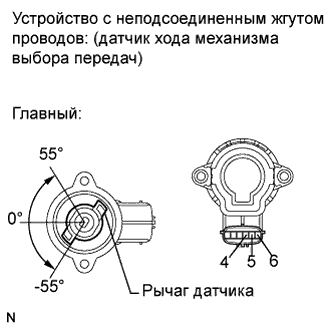
P0905 - Gate Position Selection Circuit Range/Performance
Content
P0905 – OBD-II Trouble Code Technical Description
Gate Position Selection Circuit Range/Performance
What does the fault code mean P0905?
Trouble code P0905 indicates range/performance problems with the gate position select circuit in the transmission. This OBD-II code applies to all automakers. It is connected to the shift lever position sensor, which tells the engine computer the current gear.
Problems with this sensor can result in harsh gear shifts and trouble starting the engine. To fix this problem, it is recommended to contact a car repair shop for diagnosis and repair.
Possible reasons
This range/performance issue with the gate position selection circuit may be caused by the following:
- Stroke selection sensor distortion
- Problems with an open or short circuit in the stroke selection sensor circuit
- Incorrect wiring harness condition
- Inoperative transmission control module
- Poor contact with travel select sensor/sensor circuit
- Faulty gear lever assembly
- Transmission control module (TCM) problems
- Wiring problems
- Gate selection position sensor offset
- Problems with gear shift adjustment
- GSP sensor malfunction
What are the symptoms of a fault code? P0905?
Symptoms of a P0905 trouble code include:
- Sharp gear shifting
- Delays in transmission operation before shifting gears
- Cruise control stops working correctly
Additionally, the following general symptoms may occur when this error appears:
- Check Engine Light Appears
- Possible storage of the code in the car computer
- Observation of additional symptoms by the driver.
How to diagnose a fault code P0905?
Gate select position sensor problems often occur after transmission repairs. Therefore, the first step to diagnosing the P0905 OBDII trouble code is to check the GSP sensor adjustment.
To easily diagnose this DTC, follow these steps:
- Connect the OBD-II scanner to the vehicle's OBD-II port.
- Clear the code from the car's computer and take it for a test drive to double-check the situation.
- Review the current data from the vehicle's computer to ensure the correct functional values.
- Visually check the travel select sensor and sensor circuit.
- Perform diagnostics on the transmission control module, looking for signs of trouble, such as faulty wiring. If no visual defects are found, the mechanic will conduct further diagnostics using a digital voltmeter.
Diagnostic errors
Common errors when diagnosing the P0905 trouble code include:
- Incorrect or insufficient check of GSP sensor adjustment.
- Insufficient check of the gate select sensor and gate select position sensor circuits.
- Failed attempts to clean up the code and retest the system after repair.
- Insufficient attention to possible wiring defects or a faulty transmission control module (TCM).
How serious is the fault code? P0905?
Trouble code P0905 is quite serious because it indicates a problem with the gate select position sensor in the transmission. This can cause the transmission to shift incorrectly and cause other serious problems, including harsh gear changes or trouble starting the engine. It is important to contact a professional immediately for diagnosis and repair to avoid possible serious damage to the transmission.
What repair will help eliminate the code? P0905?
To resolve trouble code P0905, you must perform the following steps:
- Check the alignment of the GSP sensor and make sure it is in the correct position.
- Check shift linkage condition and alignment.
- Check the travel select sensor circuit for opens, shorts, or poor contacts.
- Diagnose and, if necessary, replace the faulty travel select sensor.
- Check the transmission control module for possible faults and make appropriate repairs or replacement.
Contact a professional so they can further analyze and troubleshoot the specific problems associated with the P0905 code.

